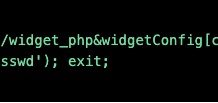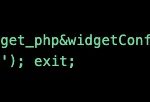By Efrat Silberhaft
One year ago, I was working as the sole designer in a small e-commerce startup. When the company shut down, I had to start looking for a new job. I decided to leave the startup world. What I didn’t know is that my next step would turn out to be in a different field — cybersecurity — and at a different type of company — a full-fledged, mature enterprise.
You’re probably asking yourself: OK, what’s the big deal? How different can it be? Well, lets say its a lot more than what I, and probably you, would have expected.
Working in a Team Versus being the only Designer
When you are the only designer in a company, you get all the credit for the design. But I realised how much I was missing out from being the sole designer, and how much I could gain from part of a team.
Don’t stress — but we need this by TOMORROW
When you are the only designer, the work is on your own shoulders, and that means constant stress. Working for a mid-sized enterprise company is not easier, but you can share the stress with your team members.
Excuse me, can I get feedback on that?
When you are the sole designer, forget about real design feedback. You will receive feedback from coworkers who most likely don’t understand design.
Due to this, you will have to give yourself assurance and approval, and hand it out to the developers.
Don’t start without getting the design attributes
In smaller companies, there is one product manager, one designer and one developer for every platform. If you are the designer, you will need to get guidelines from the product developer. Only then will you be able to start designing.
Let’s take a closer look at mid-sized companies like Imperva. Because your exposure is greater, you will do more than design. You are in charge of the project. You will be responsible for the UX as well as the UI. Not only that, if it’s your project, you will do it from the beginning until the end.
Usually the deadlines and targets will be set by the PMO, though you may need to consult with the PM about a few things. You will have to write attributes and, together with the PM, design the UX flow.
You will have to do usability testing and even meet with clients on your own. Even though you are in a team, a lot of responsibility still lies in your hands and you can learn a lot from the procedure.
The Colour of E-commerce Versus the Grey of Cybersecurity
There are quite a lot of differences between an e-commerce and a cybersecurity company. For me, working for an e-commerce company was very colourful and fun. We made e-commerce boxes for children’s clothing. The colours were bright and shiny. The customers were people you could identify with. You could and had to be creative. The sky was the limit.
In cybersecurity, this is a bit different. Well, more than a bit. Coming from a whole different world, it was frustrating to understand the design and complexity of the products.
Now comes the best part.
I learned that I welcomed the challenge. When I was designing for a different field, I used my emotions to connect to the customers. In cybersecurity, I found myself having to tap into my technical side. I needed to put in a lot more effort to ensure I produced my best work for our customers.
In an e-commerce startup, you have the time and ability to run A/B tests with customers. With cybersecurity enterprises like Imperva, you do usability test yourself. You send the design to 5-10 people within your company. As they are all in the cybersecurity world, they are best-positioned to give you their feedback.
Based on that, you change the design for final feedback and then publish the design.
The Startup Versus the Enterprise
In a small startup, there is usually one person for each role. Sometimes the CEO is the CTO and the PM, as well.
As the only designer, you will find yourself sitting for hours to ensure that you produce your best work for both your boss and the customers.
In enterprise companies like Imperva, you have a lot more places to grow, since cybersecurity is such a big world.
For example, I had the chance to work closely with other big companies, due to Imperva being a B2B company.
I get to meet clients for feedback and to inform them of new products and improvements.
I also get to see if they are interested in new products, and if they have a need for them. That leads to a lot more interaction with the actual customers.
Having the ability to attend major conferences and meet new people in the field can also help you to grow. I know it did for me.
You can also grow personally. I had the opportunity to present my design to the entire company of over 800 people.
Let’s face it, working in a small startup company might let you take all the credit for the design. But is it worth giving up the learning possibilities from fellow team members and colleagues? Is it worth giving up the opportunity to be able to work directly with customers? Let’s just say, there is a lot to think about and a lot to consider on both sides.
The post From E-Commerce to Enterprise Employee: How I Overcame my Fears and Doubts appeared first on Blog.
















